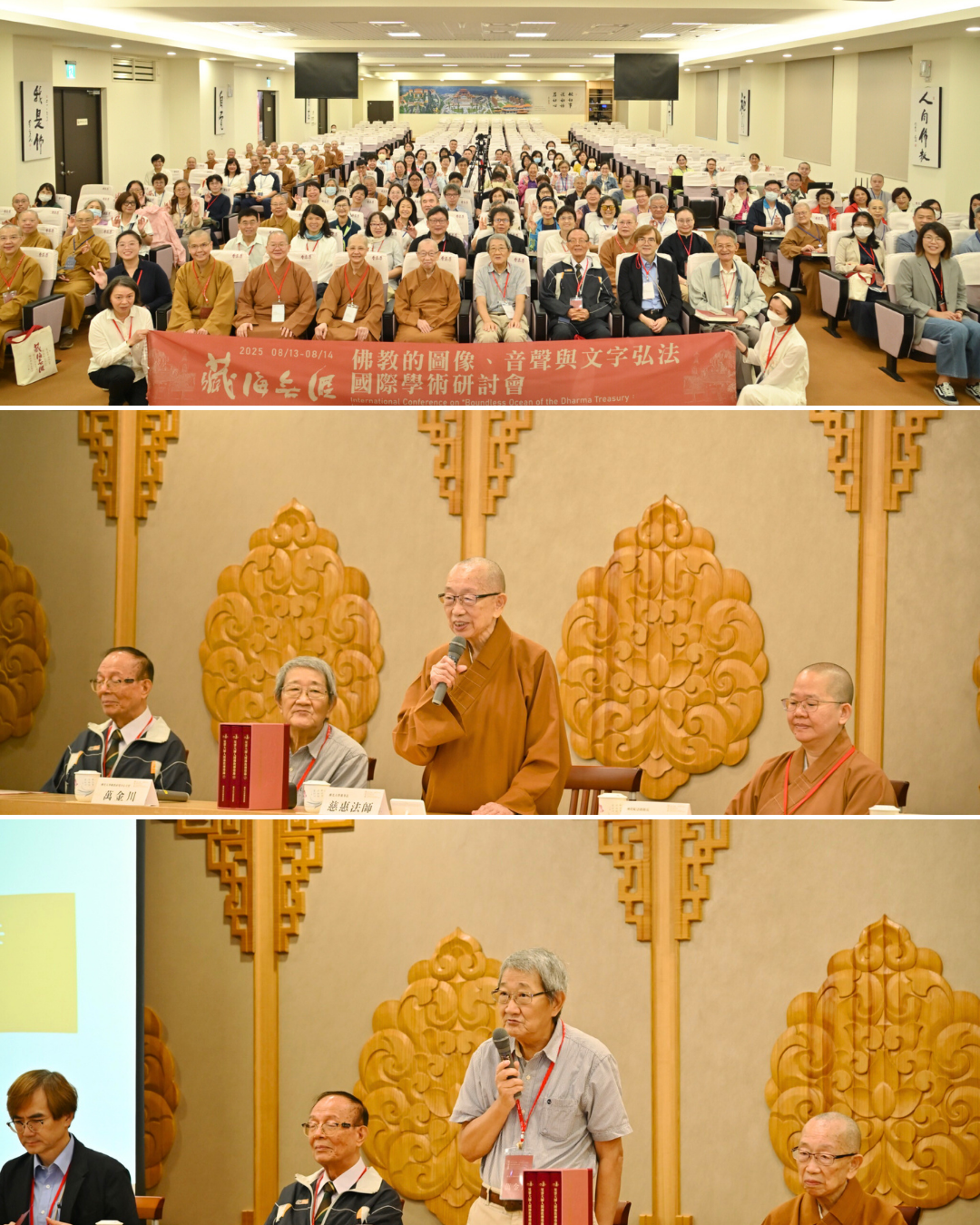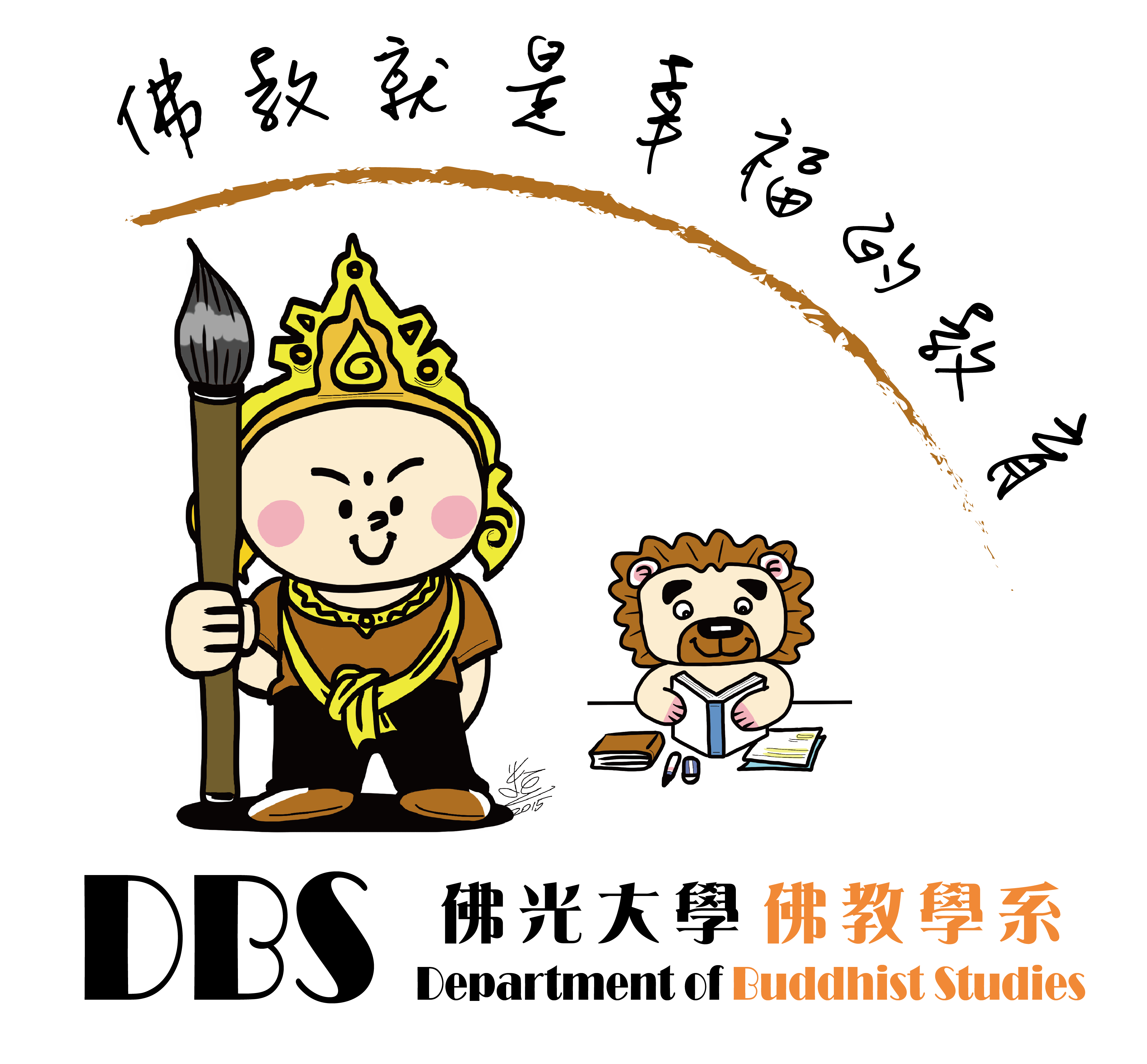The International Conference on “Buddhist Images, Sounds, and Texts in Dharma Propagation” was held on August 13–14, 2025, at Fo Guang Shan Yunlai Hall. Sixteen scholars from Germany, the United States, Mainland China, Taiwan, and other regions presented academic papers. Using methodologies such as archaeology, art history, iconography, fieldwork, and philology, they examined how, throughout history, people skillfully used mediums such as cave temples, sculptures, and music to spread the Dharma. Their studies highlight precedents for the contemporary use of multimedia, audiovisual platforms, and artificial intelligence in Dharma propagation. More than 130 participants from Hong Kong, Taiwan, Beijing, and beyond gathered for this academic feast.
This conference is one of the three major events under the theme “The Boundless Ocean of the Buddhist Canon.” It was jointly organized by the Buddhist Studies Research Center at Fo Guang University, the Institute of Humanistic Buddhism at Fo Guang Shan, and the Fo Guang Shan Buddha Museum, with co-organization by the College of Buddhist Studies at Fo Guang University. Alongside the conference, two additional programs are being held: the Popular Lectures on the Buddhist Canon (August 16–17 at the Dharma Treasure Hall) and the special exhibition “Treasures of the Fo Guang Canon: A Journey through the Jinling Sutra Publishing House” (July 26–November 16, at the Buddha Museum’s Main Exhibition Hall II). Together, the themes of text, image, and sound underscore the limitless means of transmitting the Dharma, while the combined events—conference, lectures, and exhibition—showcase the boundless ways of navigating the ocean of the teachings.
At the opening ceremony, Venerable Cihui, Chair of the Board of Fo Guang University and Special Assistant to the Founder of Fo Guang Shan, praised the lifelong dedication of conference chair Professor Wanchinchuan to research, teaching, and mentoring students, calling him a model scholar. She noted that the conference theme is both novel and inspiring for Taiwan’s academic community. In discussing Buddhist music, she reminded participants that even during the time of the Buddha in India, monks in cave monasteries set sutras to music, and tales such as that of the “Blind Monk and the Pipa” were celebrated. Venerable Master Hsing Yun, the founder of Fo Guang Shan, dedicated his life to promoting Buddhist music, spreading Chinese Buddhist chanting (fanbai) worldwide so that people in Europe, America, and Japan could experience its moving power.
Professor Wan Chinchuan, Director of the Fo Guang University Buddhist Studies Research Center and Conference Chair, remarked that as early as the sixth century, the monk Huijiao lamented: “Since the Great Teaching came East, many have translated texts, but few have conveyed its sounds.” This highlighted the limitations of relying solely on translation for transmitting Buddhism in early China. To make the Dharma accessible, Buddhists throughout history have used diverse means—images, sounds, and more. This conference not only focuses on Buddhist images but also incorporates Buddhist music, anticipating future trends in Dharma propagation through short-form video and digital platforms.
Professor Lin Tsung-Ming, Vice President of the Fo Guang Shan University System, lauded the gathering of Eastern and Western scholars, noting that discussions extended beyond antiquity to modern technologies, with rich outcomes expected. He also warmly welcomed further collaboration between Fo Guang Shan’s educational institutions and the academic community.
Professor Ma Yuan-Jung, Vice President of Fo Guang University, shared his delight in attending his first Buddhist studies conference, despite his background in the sciences. The discussions on Gandhāran culture and Dunhuang cave art resonated with his recent visits to these regions and inspired new ideas for advancing Buddhist scholarship and the internationalization of higher education.
Distinguished guests at the opening included Venerable Ruchang, Director of the Buddha Museum; Venerable Miaofan, Director of the Fo Guang Shan Institute of Humanistic Buddhism; Professor Pan Liang-Wen, Department of Art History, Tainan National University of the Arts; Dr. Liu Shufen, Research Fellow, Institute of History and Philology, Academia Sinica; Professor Tsai Ping-Heng, Department of Chinese Music, National Taiwan University of Arts; Dr. Lin Sheng-Chih, Deputy Director, Institute of History and Philology, Academia Sinica; Dr. Chuang Hui-Chih, Adjunct Assistant Professor, General Education Center, University of Hospitality and Tourism, Kaohsiung; Dr. Yang Yu-Ju, Researcher, Chung Tai World Museum; Dr. Chen Yi-An, Postdoctoral Fellow, Institute of History and Philology, Academia Sinica; Professor Yue Jian-Tung, Director, Institute of Philosophy, National Sun Yat-sen University; Professor Hsia Yun-Chung, Dean, College of Buddhist Studies, Fo Guang University; Venerable Yongben, Executive Director, Fo Guang University; and Venerable Yongfu, Chief Abbot of the Hong Kong-Macau-Shenzhen Region of Fo Guang Shan.



 College and Department of Buddhist Studies, FGU
College and Department of Buddhist Studies, FGU